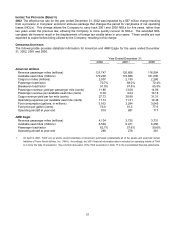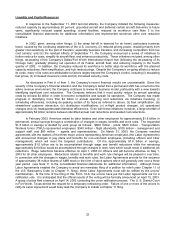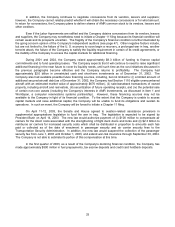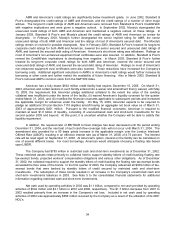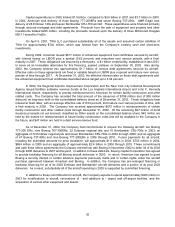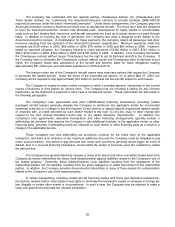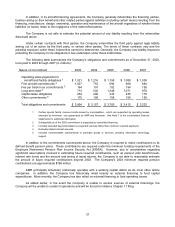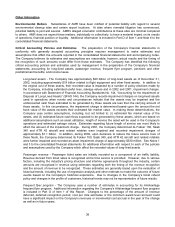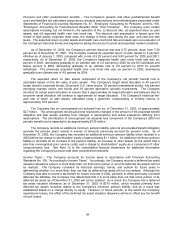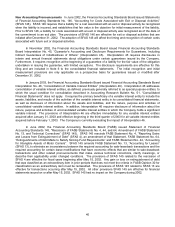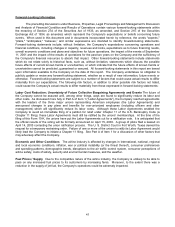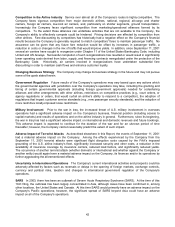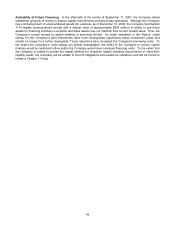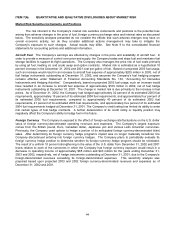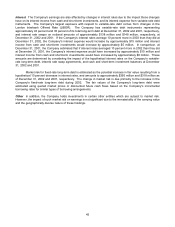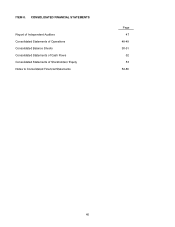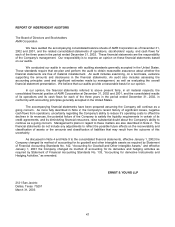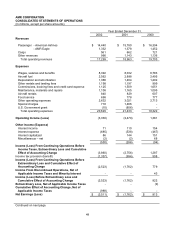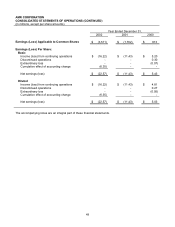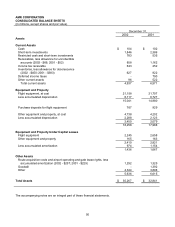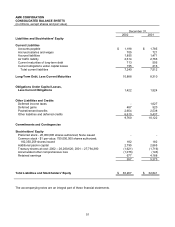American Airlines 2002 Annual Report Download - page 43
Download and view the complete annual report
Please find page 43 of the 2002 American Airlines annual report below. You can navigate through the pages in the report by either clicking on the pages listed below, or by using the keyword search tool below to find specific information within the annual report.
41
Forward-Looking Information
The preceding discussions under Business, Properties, Legal Proceedings and Management's Discussion
and Analysis of Financial Condition and Results of Operations contain various forward-looking statements within
the meaning of Section 27A of the Securities Act of 1933, as amended, and Section 21E of the Securities
Exchange Act of 1934, as amended, which represent the Company's expectations or beliefs concerning future
events. When used in this document and in documents incorporated herein by reference, the words "expects,"
"plans," "anticipates," “believes,” and similar expressions are intended to identify forward-looking statements.
Forward-looking statements include, without limitation, the Company’s expectations concerning operations and
financial conditions, including changes in capacity, revenues and costs, expectations as to future financing needs,
overall economic conditions and plans and objectives for future operations, the impact of the events of September
11, 2001 and the impact of the results of operations for the past two years on the Company and the sufficiency of
the Company’s financial resources to absorb that impact. Other forward-looking statements include statements
which do not relate solely to historical facts, such as, without limitation, statements which discuss the possible
future effects of current known trends or uncertainties, or which indicate that the future effects of known trends or
uncertainties cannot be predicted, guaranteed or assured. All forward-looking statements in this report are based
upon information available to the Company on the date of this report. The Company undertakes no obligation to
publicly update or revise any forward-looking statement, whether as a result of new information, future events or
otherwise. Forward-looking statements are subject to a number of factors that could cause actual results to differ
materially from our expectations. The following risk factors, in addition to other possible risk factors not listed,
could cause the Company's actual results to differ materially from those expressed in forward-looking statements:
Labor Cost Reduction; Uncertainty of Future Collective Bargaining Agreements and Events The future of
the Company cannot be assured until, among other things, ways are found to significantly reduce its labor and
other costs. As discussed more fully in Part A of Item 1 (“Labor Agreements”), the Company reached agreements
with the leaders of the three major unions representing American employees (the Labor Agreements) and
announced changes in pay plans and benefits for non-unionized employees (including officers and other
management) which will significantly reduce its labor costs. Although these Labor Agreements enabled the
Company to avoid an immediate filing of a petition for relief under Chapter 11 of the U.S. Bankruptcy Code (a
Chapter 11 filing), these Labor Agreements must still be ratified by the unions’ memberships. At the time of the
filing of this Form 10-K, the unions have put the Labor Agreements out for a ratification vote. It is anticipated that
the official results of the voting will be formally announced on April 15, 2003. A group of pilots filed a lawsuit on
April 14, 2003 contesting the union ratification process. The U. S. District Court in Fort Worth, Texas denied the
request for a temporary restraining order. Failure of one or more of the unions to ratify its Labor Agreement would
likely lead the Company to initiate a Chapter 11 filing. See Part A of Item 1 for a discussion of other factors that
may adversely affect the Company.
Economic and Other Conditions The airline industry is affected by changes in international, national, regional
and local economic conditions, inflation, war or political instability (or the threat thereof), consumer preferences
and spending patterns, demographic trends, disruptions to the air traffic control system, consumer perceptions of
airline safety, costs of safety, security and environmental measures, and the weather.
Fuel Prices / Supply Due to the competitive nature of the airline industry, the Company is unlikely to be able to
pass on any increased fuel prices to its customers by increasing fares. Moreover, to the extent there was a
reduction in the supply of jet fuel, the Company’s operations could be adversely impacted.


